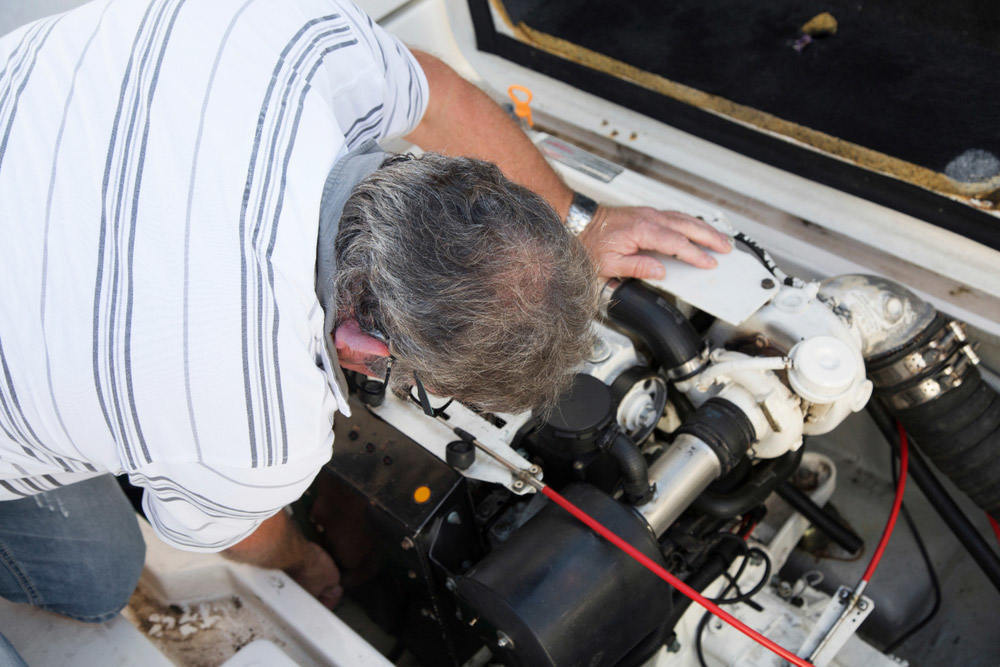

So for example, if you own the Pursuit DC 246 boat powered by the Yamaha outboard referenced above and plan on making a 20 mile trip while traveling at your “sweet spot” (33.6 MPH while turning 4500 RPM where you will burn 2.14 GPH), the minimum amount of fuel you will need to carry is 28.03 gallons. The remaining third should be held in reserve for unforeseen circumstances such as unexpected weather or towing another boat. This rule dictates that you reserve one-third of your available fuel for arriving at your destination and one third of your fuel for the return trip. To avoid running out of fuel, when planning for a trip, always follow the Rule of Thirds. Running out of fuel is a leading cause of boater distress. Of course the results that you get will vary with your boat type, boat weight, prop pitch, motor type and environmental factors such as wind speed, wind direction and wave action.įuel use in gallons per hour, miles per gallon, fuel remaining and range as seen on multifunction display. The table also indicates that the travel time would be 0.59 of an hour. To this table we have added additional columns (with values italicized) where we assume a fuel cost of $4.00 per gallon: RPMįrom the table above you can see that at planing speed the best fuel economy is 2.14 MPG at 4500 RPM and that the fuel cost to arrive at a 20 mile destination would be $37.05. Following is an example of the table filled in with values taken from a Yamaha Performance Bulletin for single Yamaha F300XSB2 outboard motor mounted on Pursuit DC 246 Boat. For each row in the table, divide MPH by GPH and note the answer under MPG. After finishing your runs, you will need to do some, math. Then, using a GPS and your boat’s fuel flow gauge, fill in the MPH and the GPH for each of the RPM entries. When making your runs, make sure you always run the boat in the same direction. Next, take your boat out and run it at each of the RPMs that appear in the left hand column. To figure the optimum RPMs at which to run your engine that will get you to where you want to go at a cost and within a time frame you are willing to accept, create a four-column table like the one that appears below. Repower with a more fuel efficient engine.ĭIY: Determine Your Boat’s Most Efficient Cruising Speed.Consider pitching up or pitching down if your boat is over- or under-revving at WOT. Check and repair or replace your prop as necessary.Proper trim is essential to good fuel economy. Handle throttles smoothly, applying only as much power as circumstances require.Tune your engine and follow the manufactuer's engine maintenance recommendations, since things like cooling systems and fuel systems maintenance are every bit as important and impact fuel mileage as well.Reduce drag by keeping the bottom clean.Here is a condensed version of what he has to say: In our West Advisor article Lowering Your Fuel Cost, (which we encourage you to read), noted marine writer Don Casey suggests eight practical measures to reduce fuel consumption each and every time you go out.
#Inboard outboard vs outboard fuel economy how to#
We will discuss how to find your “sweet spot” shortly but first, let’s take note of what the widely acclaimed marine writer Don Casey recommends. So the issue becomes, how much fuel are you willing to burn in order to arrive at your destination within a time frame that is acceptable to you? That is the proverbial “sweet spot”. Throttling back even more will further reduce fuel consumption, but at a certain point, reduced boat speed may result in an unacceptable time to arrival.
#Inboard outboard vs outboard fuel economy full#
Of course, as experts point out, throttling back to 75 percent of full throttle can result in up to 50 percent less fuel burned. Now ask yourself, when is the last time your car burned a tank of gas (about 20 gallons) in just one hour? So for example, a 225 horsepower outboard running at full throttle will burn about 22.5 gallons per hour. To give you some perspective, a rough approximation of what this means for a gasoline outboard powered boat is to take the horsepower of the motor and divide it by 10. While most anyone who drives a car is familiar with “miles per gallon” as a way of measuring fuel efficiency, for boats think “gallons per hour”. Gallons per Hour versus Miles per Hourįor those unfamiliar with the cost of operating a boat, it is astounding how much fuel marine engines consume. But now, with the radical increase in fuel prices, most of us have a far less blasé attitude toward the cost of operating our boats.

Instead we were looking forward to the fun and excitement that boats provide. Let’s face it, when most of us bought our first boat, we were not particularly concerned about fuel economy.


 0 kommentar(er)
0 kommentar(er)
